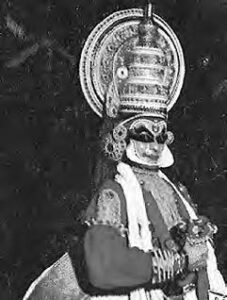CHINA
SITE: CHINESE LION DANCE
URL: http://www.columbia.edu/~nc79/liondance.html
To learn about the symbols of the Chinese Lion Dance and about its development, this page from Columbia University will give a great deal of information and images. The Lion Dance of China is also contrasted with those of Taiwan and Korea.
SITE: TRADITIONAL CHINESE CULTURE IN TAIWAN: CHINESE DANCE
URL: http://www.houstoncul.org/culdir/danc/danc.htm On the page “Traditional Chinese Culture in Taiwan: Chinese Dance,” one finds a history of the development of the art of the dance in China, as well as an outline of the dance groups in contemporary Taiwan that have participated in the renaissance of Chinese dance.

INDIA
SITE: A BRIEF HISTORY OF CLASSICAL DANCE FROM SOUTH INDIA
URL: http://www.wesleyan.edu/histjrnl/bhhist.htm Excerpted from the Ph.D. dissertation of Jon B. Higgins is “A Brief History of Classical Dance from South India.” Beginning with the sixth to fourteenth centuries and the dynasties of the Pallavas and Chollas, the article’s focus is the development of dance in the nineteenth and twentieth centuries.
SITE: DANCE FORMS OF KERALA
URL: http://enuxsa.eas.asu.edu/~aknair/kerala/dance.index.html On the Web page “Dance Forms of Kerala,” there are photographs (see above photo) and descriptions of the distinctive features of Kathakali, Krishnanaattam, Koodiyaattam, and Mohiniyattam. The origins, famous dancers, costumes, and the music for some of these forms are described in detail.
SITE: DANCES OF INDIA
URL: http://www.unt.edu/~sga0001/dance.html For an overview and links to many pages dealing with both traditional and folk dance forms of India, go to the “Dances of India” page. There are links to pages about Bharatanatyam which originated in the state of Tamilnadu, to Kuchipudi from the state
of Andhra Pradesh and performed only by men in ancient days, to the dances of Kerala (referred to above) to Manipuri and other traditional dances of India. The folk and tribal dances include Bhangra, the dances of Orissa, Lavni, and Mando.
INDONESIA
SITE: INDONESIAN DANCE
URL: http://www.kaiwan.com/~gamelan/indodance.html
The page devoted to Indonesian Dance notes that there are a large number of dance forms in Indonesia and that the most diverse are those of Java and Bali. This Web site describes the Javanese and Balinese dance pieces that “outsiders” are most likely to see. These descriptions of the most popular dances from both regions include the origins, the symbolism, and the costuming; they are accompanied by some photographs.
SITE: JAVANESE ROYAL DANCES
URL: http://www.euronet.nl/users/menr/ejavad.html The page of a dance group in the Netherlands, which specializes in Indonesian dance, offers some information on Javanese royal dances. Eight dance forms are explained, including Tari Golek, Engar-engar, and Menakoncar.
JAPAN
SITE: DANCE AND SHAMISEN
URL: http://benten.fix.co.jp/people/matt/homepage/matt/dance.html
On the “Dance and Shamisen” page there are descriptions of several classical dances for male performers, such as Ame no Goro, Shichi Fukujin, andSukeroku. The descriptions are accompanied by photographs.
THAILAND
SITE: THAI CLASSICAL DANCE
URL: http://www.mahidol.ac.th/thailand/dance.html
The Web site “Thai Classical Dance” provides a history of dance and a lengthy description of the costumes and masks used by dancers, including those of the Khon performers. The ritual and art of making a Khon mask is carefully detailed. The contents of this page are derived from information in Kinaree magazine.
These short synopses of some Asian dance sites on the World Wide Web are meant to stimulate you to explore farther and deeper into this subject, both on the Web and beyond. Some of you may wish to contribute information to these Web pages about dance, or perhaps create pages of your own. The opportunitiesfor learning and for teaching are unlimited.
Web Gleanings is a new column that will appear in each issue of Education About Asia. It will explore the offerings of the Web on a specific subject. A brief summary of the information and the Web site address (URL) will be provided.

